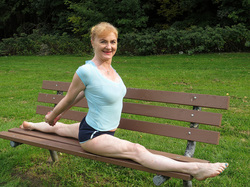- Home
- About Us
- TSPT Academy
- Online Courses
-
Resources
- Newsletter
- Business Minded Sports Physio Podcast
- Day in the Life of a Sports PT
- Residency Corner
-
Special Tests
>
-
Cervical Spine
>
- Alar Ligament Test
- Bakody's Sign
- Cervical Distraction Test
- Cervical Rotation Lateral Flexion Test
- Craniocervical Flexion Test (CCFT)
- Deep Neck Flexor Endurance Test
- Posterior-Anterior Segmental Mobility
- Segmental Mobility
- Sharp-Purser Test
- Spurling's Maneuver
- Transverse Ligament Test
- ULNT - Median
- ULNT - Radial
- ULNT - Ulnar
- Vertebral Artery Test
- Thoracic Spine >
-
Lumbar Spine/Sacroiliac Joint
>
- Active Sit-Up Test
- Alternate Gillet Test
- Crossed Straight Leg Raise Test
- Extensor Endurance Test
- FABER Test
- Fortin's Sign
- Gaenslen Test
- Gillet Test
- Gower's Sign
- Lumbar Quadrant Test
- POSH Test
- Posteroanterior Mobility
- Prone Knee Bend Test
- Prone Instability Test
- Resisted Abduction Test
- Sacral Clearing Test
- Seated Forward Flexion Test
- SIJ Compression/Distraction Test
- Slump Test
- Sphinx Test
- Spine Rotators & Multifidus Test
- Squish Test
- Standing Forward Flexion Test
- Straight Leg Raise Test
- Supine to Long Sit Test
-
Shoulder
>
- Active Compression Test
- Anterior Apprehension
- Biceps Load Test II
- Drop Arm Sign
- External Rotation Lag Sign
- Hawkins-Kennedy Impingement Sign
- Horizontal Adduction Test
- Internal Rotation Lag Sign
- Jobe Test
- Ludington's Test
- Neer Test
- Painful Arc Sign
- Pronated Load Test
- Resisted Supination External Rotation Test
- Speed's Test
- Posterior Apprehension
- Sulcus Sign
- Thoracic Outlet Tests >
- Yergason's Test
- Elbow >
- Wrist/Hand >
- Hip >
- Knee >
- Foot/Ankle >
-
Cervical Spine
>
- I want Financial Freedom
- I want Professional Growth
- I want Clinical Mastery
 We are all guilty at one time or another of prescribing a hamstring stretch prematurely. You saw a patient bend forward to touch their toes and they abruptly stop short. This must be their hamstrings stopping their motion! Well unfortunately it is not that simple anymore. Modern literature tells us the reason they cannot touch their toes may be due to an array of possibilities: tight posterior chain muscles, adverse neural tensioning, or poor stability/motor control of the core musculature just to name a few. For the sake of this post we want to address hamstring tightness vs. adverse neural tension. To begin this conversation, let's take that same patient above and place him/her in long sitting to reduce the effects of spinal loading. Now, postural demands are less than that in standing. We can focus specifically on muscle tightness vs. neural tension. The patient leans forward to touch their toes, but again nothing changes. We are no closer to finding our solution than we were in standing. Now, we bring the patient into supine, and the therapist performs a passive straight leg raise (PSLR). The patient cannot raise beyond 60 degrees of hip flexion. We still do not know, but we are getting close to the answer. Is it muscle tightness that is stopping this patient at 60 degrees or is the act of passively straightening the leg causing strain on the neural tissues. To answer this question, simply palpate the ASIS as you perform the PSLR. If you notice that hip flexion stops prior to movement at the ASIS, the answer is Neural Tension. If the ASIS begins to move prior to resistance, then hamstring tightness is the answer. Since the hamstrings attach to the Ischial Tuberosity, the body will naturally begin to posterior pelvic tilt once all the available range is taken up in the hamstring muscles. This posterior pelvic tilt will cause movement at the ASIS, letting you know the hamstring muscles have reached their end range. If no movement was noted at the ASIS, you can shift your hypothesis towards adverse neural tension. An additional component you can consider is the use of cervical flexion/extension to change the tension of the nerves and thus potentially alter SLR ROM. Just like any examination test, it is important to cluster your findings with other tests and measures. For example, if you suspect adverse neural tension, perform a SLUMP test as well. Additionally, always check side to side symmetry.
6 Comments
11/18/2013 07:45:57 am
Hi James,
Reply
Robert
11/21/2013 12:02:22 am
Just to clarify, do you palpate the ASIS on the same or opposite side of the PSLR?
Reply
Jim Heafner
12/1/2013 12:01:46 am
I have tried doing both, but prefer to palpate the ASIS on the ipsilateral side. Since the hamstrings on that ipsilateral side attach to that innominate, I believe it gives a more accurate result. Unfortunately the movement can be very subtle.
Reply
Michelle
12/5/2013 12:41:47 am
Thanks for the post.
Reply
Alfred
8/5/2015 02:43:51 am
You are most likely biasing one hamstring over the other with this modification, so it may give you some good information as to which hamstring is tight. It shouldn't change the sciatic nerve itself much.
Reply
8/2/2021 06:02:01 am
Very delighted to come across this useful blog. Herniated discs are more common in people after 50 year, but it can occur in 30s also. You should consider consult or visit a neurologist who provides the best and cost effective treatment. Since, I have gone through your blog and found it useful, I will be glad if you visit my blog and share your valuable opinion : https://bit.ly/3i94vYl
Reply
Leave a Reply. |
Dr. Brian Schwabe's NEW Book in partner with PaleoHacks!
Learn residency-level content on our
Insider Access pages We value quality PT education & CEU's. Click the MedBridge logo below for TSPT savings!Archives
July 2019
Categories
All
|






 RSS Feed
RSS Feed